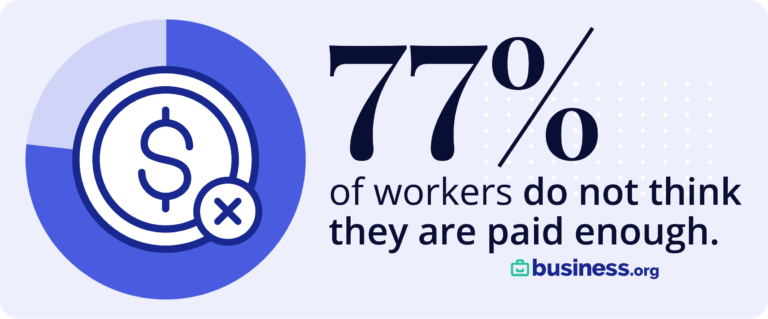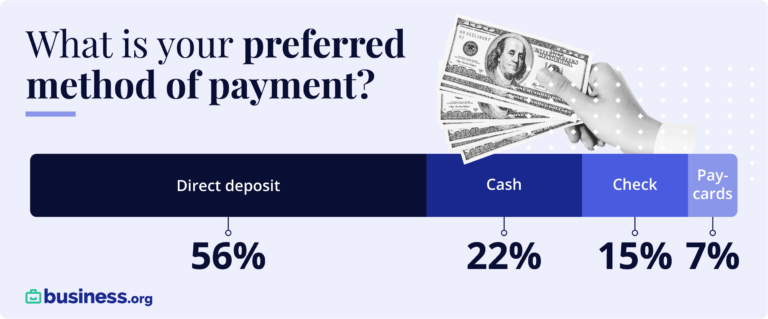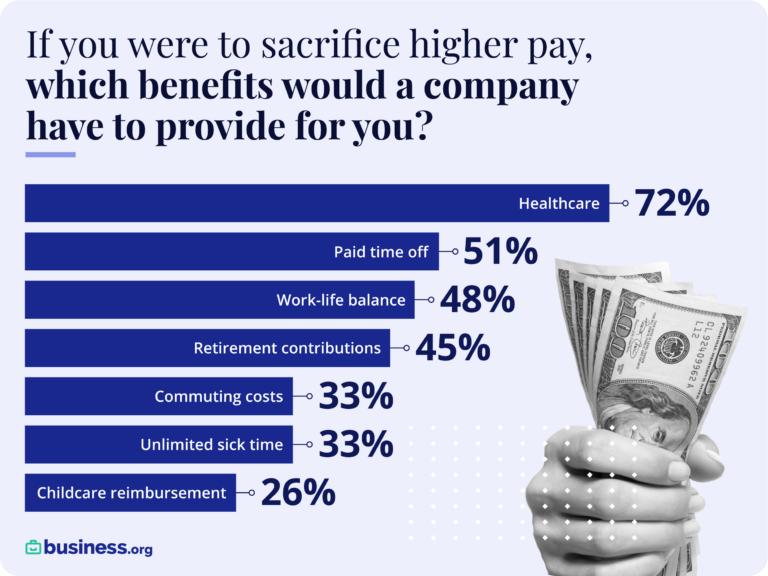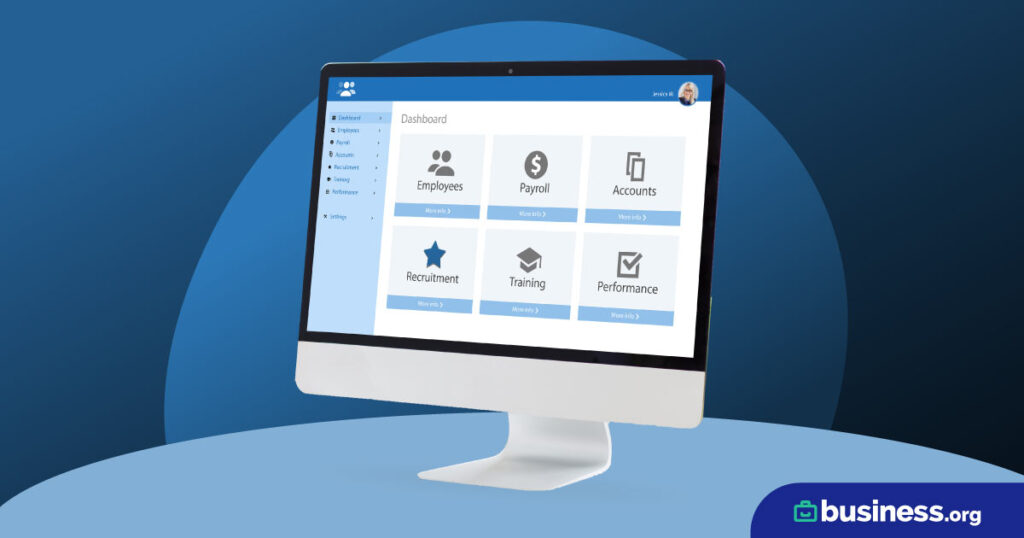We are committed to sharing unbiased reviews. Some of the links on our site are from our partners who compensate us. Read our editorial guidelines and advertising disclosure.
How to Choose Payroll Software
Payroll software can save you time, money, and stress—as long as you choose the right payroll software for your business’s needs. With hundreds of software options on the market, how can you find the right one for you? Below, Business.org explains how to evaluate potential payroll systems based on features, pricing, scalability, customer service, and your own unique requirements.
Are you new to small-business payroll? Our Ultimate Guide to Payroll explains what payroll is, how to choose a pay schedule, how to process payroll, and whether payroll software is right for your business.
Choosing payroll software table of contents
Your payroll needs
Before you start searching for payroll processing options, narrow your search by determining what role you need payroll to play in your organization. You can do so by asking the following key questions.
What level of payroll management am I looking for?
Self-service payroll stores your employee data and automatically calculates payroll payments and tax withholding amounts, but it leaves paying your employees and filing payroll taxes up to you. Full-service payroll calculates employee paychecks, withholds taxes and other withholding amounts, and automatically files paperwork for you. (It also costs more than self-service payroll.)
How much money have I budgeted for running payroll?
Most payroll companies charge a monthly base fee and an additional cost per employee. Additionally, the more features your software has, the more it will cost per month.
What types of employees do I work with?
If you work solely with contractors, you can find a contractor-only payroll plan (like Square Payroll’s) that costs less per month. If you work with both W-2 and 1099 employees, you’ll need software that allows you to manage both types of workers. (And for the record, that’s most payroll software.)
How do I want to pay my employees?
Almost all online payroll software providers use direct deposit as their primary payment option. Some offer additional payment options, including paper checks and prepaid debit cards, but these payroll options tend to cost more.
What benefits am I offering my employees?
Along with paying your employees and calculating your taxes, some payroll software companies offer benefits packages. For instance, Gusto helps you find workers compensation insurance, medical and dental insurance, and 401(k) packages that integrate easily with payroll software to make payments as simple as possible for both you and your employees.
How often will you run payroll?
Some payroll systems charge you by the month, but others charge you by how many times you run payroll (meaning how often you pay your employees). Typically, per-payroll plans cost more, and we recommend choosing software that offers unlimited payroll runs. On the other hand, if you pay contractors infrequently, a payroll-run-based software might save you more money in the long run.
By signing up I agree to the Terms of Use and Privacy Policy.
Payroll, tax, and HR features
Now that you know what you need your payroll management system to do, you can start looking for software that fits those requirements.
Payroll features
First, you’ll want to assess a provider’s payroll features, which could include the following:
- Paycheck calculations
- Payroll tax calculations
- Direct deposit, paper check printing, prepaid paycheck cards, or other payment methods
- Tax form generation, including the tax forms business owners must submit to the federal government and tax forms you must distribute to your employees by law
Of course, your online payroll software shouldn’t just provide the above services—it also needs to make the payroll process as easy as possible for both you and your employees. Depending on the software, user-friendly features could include the following:
- Employee self-service portals where employees can update their direct deposit information, access tax forms, and print off pay stubs
- Employer-facing mobile apps for running payroll on the go (most payroll software lacks an employer-facing app, so if this is an essential feature for your mobile business, check out our list of the best payroll apps for employers)
- Employee-facing mobile apps so employees can check their payroll information from anywhere (and even clock in and out, depending on the software)
- Accounting software integration to eliminate redundant data entry and keep your books balanced
Similarly, some payroll companies offer benefits specific to different types of workers. For instance, some integrate with time clocks (or offer a built-in time clock) to make paying hourly employees as simple as possible.
Tax features
Like we said above, payroll software can be self-service (you file taxes yourself) or full-service (the software automatically files taxes for you). Regardless of the type of software you choose, your payroll provider should offer a tax-filing or tax-calculation guarantee. These guarantees ensure that if the payroll provider makes a mistake with your taxes, the provider will deal with the IRS and pay associated fines.
We strongly recommend choosing payroll software that includes a payroll tax guarantee. Payroll service providers that leave off a guarantee are making you responsible for their payroll mistakes—which puts you in a risky position with long-term financial consequences.
HR features
If you’re interested in software that bundles payroll with other HR features, prioritize software with add-ons like these:
- New hire onboarding
- Automatic new hire state reporting
- Retirement plans
- Health insurance plans
- Workers compensation insurance
- Other benefits (commuter benefits, scholarships, etc.)
HR and payroll packages should also let you tackle crucial HR tasks like benefits administration.
Scalability
Some payroll providers, like OnPay, offer just one payroll plan. With providers like these, your price depends on the number of employees you have—there aren’t more expensive plans with, say, additional HR features.
Other payroll software solutions, like SurePayroll, offer two plans: a cheaper self-service plan and a more expensive full-service plan. And still others, like ADP and Gusto, offer a variety of plans that include more features as they increase in cost.
It’s not too tricky to transfer payroll data from one provider to another. But if you anticipate major employee growth over the next few years, you’ll save future time and hassle if you choose a provider with scalable plans. That way, you can simply upgrade to a heftier plan through the same payroll solution instead of searching for an entirely new provider with different benefits, processes, and customer service teams.
That isn’t to say you shouldn’t choose a payroll provider that has just one plan. (In fact, OnPay is one of our favorite providers, and its single plan still has a variety of features for teams of all sizes.) It just means that when choosing a payroll solution, you’ll want to think about your future payroll and HR needs—not just your current ones.
Customer service
Getting pay right is important to your employees, your business, and (especially) the federal government. So if you run into software problems, you need assistance from a real live person as soon as possible.
Before committing to a payroll service, make sure to read through a company’s customer service contact info. Is customer service available on weekdays only, or can you get help on weeknights, weekends, and holidays too? Can you get in touch with customer service via email only? (If so, run the other way—fast.) Does the company’s website include a forum, FAQ section, or library to help you troubleshoot problems, or is your only option for help an endless phone tree staffed by robots?
You can find answers to some of these questions—and get a handle on a payroll provider’s reputation—on consumer review sites like Trustradius and Trustpilot. We also recommend reading reviews on the Better Business Bureau and checking out mobile app ratings on Google Play and Apple’s App Store.
Of course, take online reviews with a grain (or, depending on the review, a heaping spoonful) of salt. Only the most passionate consumers tend to leave reviews, which means they often reflect extremes. Still, if multiple customers report the same problems, you can generally take them at their word—assume that if you sign up, you’ll encounter the same problem too.
Payroll software FAQ
How do I find the best payroll software?
To find the best payroll software for your small business, ask yourself some central questions about your company’s payroll and HR needs:
- Do you need fully automated, HR-inclusive payroll software, or would you prefer bare-bones software that helps you calculate paycheck amounts while leaving everything else in your hands?
- How many employees do you have? What types of benefits do you want to offer them?
- Do you want payroll software that integrates with the small-business software you already use, like accounting software or time-tracking apps?
Once you’ve used these questions to assess your needs, you can start looking at payroll software options that meet your criteria. (If you’re looking for a place to start, we’ve hand-picked and reviewed a few of the best payroll options for small businesses.) Then sign up for either a free trial or a free demo to make sure the software you’ve found really does match your list of needs.
What should I look for in payroll software?
After evaluating your business’s payroll requirements using the questions we listed above, review the following features of any payroll software you’re considering:
- Payroll and HR features
- Tax filing, guarantees, and legal compliance
- Ease of use
- Third-party software integration
- Pricing
- Number of plans
- Customer service hours and availability
- Customer ratings and reviews
Which free payroll software is best?
If you’re looking for completely free payroll software, we recommend Payroll4Free. It lets you run payroll (for free, obviously) for up to 20 employees. It includes features some paid providers don’t, like PTO tracking, free accounting software integration, and access to pre-filled tax forms. If Payroll4Free won’t work for you, check out our other free payroll options—you might find a better match.
Alternatively, if you have just a handful of employees and feel good about your organizational skills, a free spreadsheet template can help you calculate payroll and generate employee payslips. But if you want typical payroll software perks like tax filing, tax forms, and HR add-ons, paid payroll software is the way to go.
The takeaway
There’s no way around it: payroll is complicated. But once you find the right payroll software for your business, you can start minimizing the time, hassle, and stress you might associate with payroll. And don’t forget that nearly all payroll providers offer free trials (or, at the very least, free demos). Definitely take advantage of those opportunities—the wrong payroll software adds to your stress, so taking the time to find the right software is absolutely worth it.
Ready to start running payroll? Check out our list of the year’s best payroll providers for small businesses like yours.
Related reading

In July 2021, employment rose and unemployment dropped to 5.4%, its lowest rate since April 2020.1,2 With more people going back to work, employers have the opportunity to change how they used to do business before the pandemic.
We asked working Americans how they get paid now and how they would prefer to get paid. Although some trends seem to be emerging, the biggest surprise was which benefits employees prefer over higher pay.
Priorities changed during the last 18 months, and as you look ahead it may be worth taking these results into account—especially as you consider your business’s payroll.
How do Americans want to get paid?
Nearly half of Americans (48%) say they would prefer to be paid weekly, but only 35% so far are. In fact, most Americans (64%) are paid a couple of times a month, but only a fraction of Americans (45%) actually like that payment schedule. Only 6% of Americans don’t care when they are paid.
That may not seem like a big difference—switching to a weekly pay schedule—but with 15% of Americans reporting that their company has a hard time paying them on time, that could be a significant change. For some employers, that may mean they need to find the right pay schedule for their business.
Looking at different payment methods, we asked Americans which one they preferred:
- Cash
- Check
- Direct deposit
- Paycards
Just over half (56%) reported they prefer being paid via direct deposit, and 56% are currently being paid that way. Cash was the second preferred method of payment. It was also a pretty even breakdown among hourly and salary pay preference: 48% of Americans prefer being paid hourly and 49% are currently being compensated that way.

Most of our survey results here line up—a lot of people are being paid the way they want to, which is good news for employees and employers. Of course, pay is only one part of the compensation package employees receive. So what are benefits looking like now?
Do employees prefer higher pay or better benefits?
Pay is the hallmark of any compensation package, but, when asked, many Americans choose certain employer-provided benefits over higher pay.
After the pandemic, it makes sense that 72% of Americans would want their company to provide health care if they were going to forgo higher pay. Other top choices were more paid time off (51%), a better work-life balance (48%), and company retirement contributions (45%).
Coming out of the pandemic, we also saw employees wanting their commuting costs covered (33%), unlimited sick time (33%), and childcare reimbursement (26%).
Now, this does not mean that Americans would prefer to be paid less. Companies have found that they need to offer great incentives to attract workers, and these are some of the benefit choices employees would make.

What do Americans want from their employer?
With 77% of employees feeling they are not paid enough for the work they do, Americans want more from their employers. About one-fourth (24%) would rather get paid more and choose their benefits on their own, too. That’s in contrast to the 16% who would rather get paid less and have access to better perks and benefits—like matching retirement contributions (17%), fully paid health insurance (13%), paid maternity and paternity leave (13%), and more paid time off (11%).
But more than anything, American workers want their employer to value them. Too often, employees are taken for granted. Many are not paid on time (15%) and paid in a way that works best for them. If employers want to attract people to new jobs, they should listen to what employees are saying and make changes that show they value their employees’ contributions.
The Takeaway
With Americans going back to work, many are negotiating the terms of their pay. From pay schedules to benefits, employers have a lot of variables to work out. There are so many news stories right now about employers trying to attract talent; this survey tells us what employees really want in their compensation package. If you’re looking to hire, adding benefits, changing the pay schedule, and increasing compensation could be just the thing to bring your new hire on board.
Methodology
We partnered with Pollfish to conduct an anonymous survey of 700 working Americans. Business.org analyzed the results and compiled this report. To learn more about Pollfish and how it organically finds respondents, check out its methodology.
Sources:
- U.S. Bureau of Labor Statistics, “Employment Situation Summary,” August 8, 2021. Accessed August 10, 2021.
- Economic Research from the Federal Reserve Bank of St. Louis, “Unemployment Rate,” July 2021. Accessed August 10, 2021.
Disclaimer
At Business.org, our research is meant to offer general product and service recommendations. We don't guarantee that our suggestions will work best for each individual or business, so consider your unique needs when choosing products and services.





